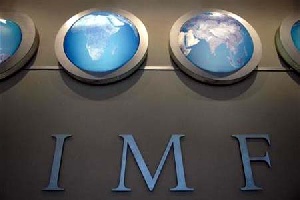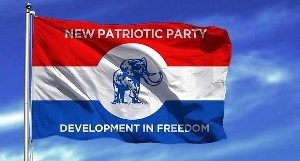- Home - News
- TWI News | TV
- Polls
- Year In Review
- News Archive
- Crime & Punishment
- Politics
- Regional
- Editorial
- Health
- Ghanaians Abroad
- Tabloid
- Africa
- Religion
- Election 2020
- Coronavirus
- News Videos | TV
- Photo Archives
- News Headlines
- Press Release
Business News of Tuesday, 17 May 2016
Source: B&FT
Ghana broadly meets 2015 IMF programme targets
The International Monetary Fund (IMF) last week completed its third review mission to Ghana (B3negative), and concluded that the country as at the end of December 2015 had broadly met the performance criteria under its three-year Extended Credit Facility (ECF) programme.
Additionally, the year-end 2015 fiscal deficit of 6.7% of GDP in cash terms surpassed the budgeted 7.0% target and marked a significant improvement from the 9.4% deficit reported in 2014, and the country’s fiscal consolidation efforts included larger-than-expected arrear repayments.
The continued compliance with the IMF programme criteria is credit-positive because it bolsters investor confidence amid difficult domestic and external funding conditions.
Revenue and expenditure data indicate that Ghana is making progress on both (see Exhibit 1). At 22.2% of GDP, year-end revenues and grants exceeded the budgeted amount by 0.4 percentage points of GDP, whereas expenditures of 26.7% of GDP constituted savings of 0.5 percentage points.
That said, higher-than-projected import revenue exemptions of 1.5% of GDP point to significant foregone revenues mainly related to large investments in the oil, gas and power sectors. The Ministry of Finance has announced greater oversight in granting exemptions, and will work with the IMF to broaden Ghana’s tax base and increase tax revenues, which although improving remain constrained at 17.3% of GDP.
The cash balance augments the overall balance by effective arrear repayments and tax refunds. Sources: Haver Analytics and Moody’s Investors Service
An important achievement in Ghana’s fiscal consolidation process is the accelerated clearance of accumulated domestic arrears, which reached a peak of about 6.5% of GDP in 2014 (see Exhibit 2). At the end of 2015 effective arrear repayments and tax refunds amounted to 2.4% of GDP, versus a budgeted 1.7%. Government aims to clear another 1.4% of GDP this year and the remainder by end of 2017 without incurring any new domestic arrears, in line with one of the programme’s quantitative benchmarks. The outstanding amounts include arrears to utility companies, other state-owned enterprises, statutory funds, the pension fund, and audited claims by oil importers related to foreign-exchange losses in 2014 and early 2015.
One exception the IMF cited is the small overstep in the wage bill at an effective 7.5% of GDP from 8.3% in 2014, versus a nominal ceiling equal to 7.4% of GDP. Gradually, more stringent payroll controls introduced in April 2015 have contributed to reducing the wage/tax revenue ratio to 43.7% in 2015 from 49.1% in 2014 and almost 65% in 2012. We expect the level to decline to government’s stated target of 35% after 2017.
On the funding side, the fiscal deficit and large rollover needs, especially in the domestic debt market, result in public gross financing needs of about 20% of GDP in 2016 and in 2017, when a US$530million Eurobond matures.
Taking into account the tight domestic and external funding conditions, the government has underscored its commitment to continued fiscal consolidation during the current election year by offsetting any oil revenue shortfalls arising from the US$53 oil price assumption in the 2016 budget, and by adding further safeguards against potential wage bill overruns to achieve the revised cash deficit target of 4.8% of GDP from 5.3% previously.











